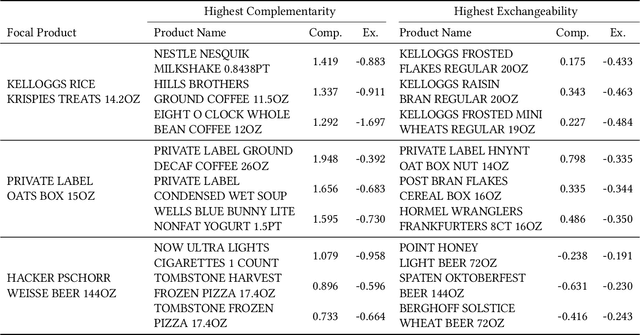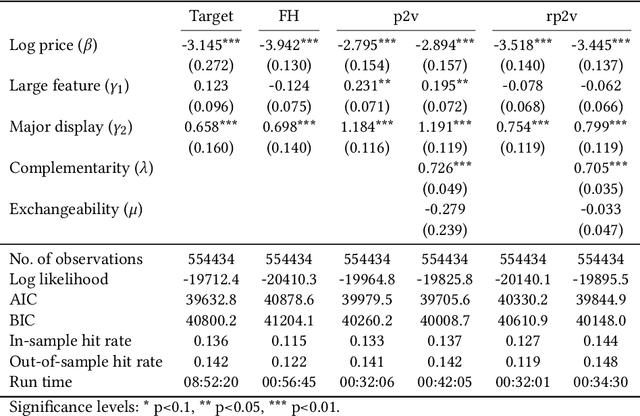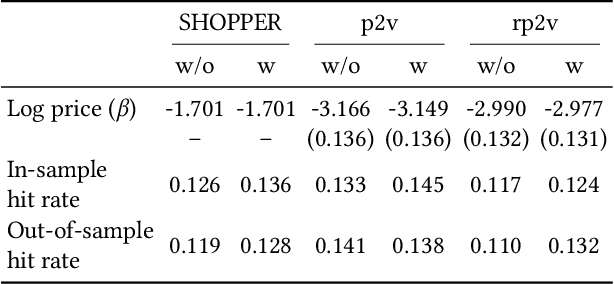Isamar Troncoso
Studying Product Competition Using Representation Learning
May 21, 2020


Abstract:Studying competition and market structure at the product level instead of brand level can provide firms with insights on cannibalization and product line optimization. However, it is computationally challenging to analyze product-level competition for the millions of products available on e-commerce platforms. We introduce Product2Vec, a method based on the representation learning algorithm Word2Vec, to study product-level competition, when the number of products is large. The proposed model takes shopping baskets as inputs and, for every product, generates a low-dimensional embedding that preserves important product information. In order for the product embeddings to be useful for firm strategic decision making, we leverage economic theories and causal inference to propose two modifications to Word2Vec. First of all, we create two measures, complementarity and exchangeability, that allow us to determine whether product pairs are complements or substitutes. Second, we combine these vectors with random utility-based choice models to forecast demand. To accurately estimate price elasticities, i.e., how demand responds to changes in price, we modify Word2Vec by removing the influence of price from the product vectors. We show that, compared with state-of-the-art models, our approach is faster, and can produce more accurate demand forecasts and price elasticities.
 Add to Chrome
Add to Chrome Add to Firefox
Add to Firefox Add to Edge
Add to Edge